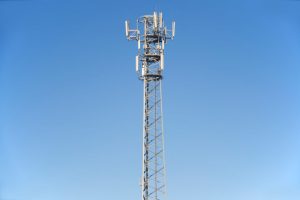Starlink: Revolutionizing Global Connectivity with Satellite Internet

Starlink: Revolutionizing Global Connectivity with Satellite Internet
Starlink is a satellite constellation developed by SpaceX, a private aerospace manufacturer and space transport services company founded by Elon Musk. The project aims to provide high-speed, low-latency internet connectivity across the globe, bridging the digital divide and connecting remote communities. With its innovative technology and ambitious goals, Starlink is poised to revolutionize the telecommunications industry and transform the way we access the internet.
How Starlink Works
Starlink consists of a network of low-Earth orbit (LEO) satellites, each equipped with advanced communication equipment and solar panels. The satellites are launched into space using SpaceX’s Falcon 9 rocket and are designed to provide internet connectivity to users on the ground. The system uses a phased array antenna to steer beams of internet connectivity to specific areas, allowing for efficient and targeted coverage.
The Starlink satellites are positioned in a low-Earth orbit, approximately 550 kilometers above the Earth’s surface. This close proximity to the planet allows for faster data transfer rates and lower latency compared to traditional geostationary satellites. The satellites are also equipped with inter-satellite links, enabling them to communicate with each other and provide seamless coverage across the globe.
Features and Benefits
Starlink offers several features and benefits that make it an attractive option for internet users. Some of the key advantages include:
High-speed internet: Starlink provides fast internet speeds of up to 1 Gbps, making it suitable for a wide range of applications, including streaming, online gaming, and cloud computing.
Low latency: The low-Earth orbit of the Starlink satellites reduces latency to as low as 20 ms, which is comparable to fiber-optic connections.
Global coverage: Starlink aims to provide internet connectivity to remote and underserved communities, bridging the digital divide and promoting global connectivity.
Security: Starlink uses advanced encryption and security protocols to protect user data and prevent cyber threats.
Impact on the Telecommunications Industry
Starlink is expected to have a significant impact on the telecommunications industry, disrupting traditional business models and creating new opportunities for growth and innovation. Some of the key effects include:
Increased competition: Starlink will compete with traditional internet service providers, driving down prices and improving services.
New business models: The satellite internet market is expected to create new revenue streams and business opportunities, such as satellite-based backhaul services and IoT connectivity.
Rural connectivity: Starlink will provide internet connectivity to remote and underserved communities, promoting digital inclusion and bridging the rural-urban divide.
Challenges and Future Developments
While Starlink has made significant progress, there are still several challenges to overcome. Some of the key issues include:
Regulatory hurdles: Starlink must comply with regulatory requirements and obtain necessary licenses to operate in different countries.
Technical challenges: The development of advanced satellite technology and launch systems is a complex and costly process.
Market competition: Starlink will face competition from other satellite internet providers, such as Amazon’s Kuiper Systems and OneWeb.
Despite these challenges, Starlink is well-positioned to become a leading player in the satellite internet market. With its innovative technology, ambitious goals, and strategic partnerships, Starlink is poised to revolutionize the telecommunications industry and transform the way we access the internet.




